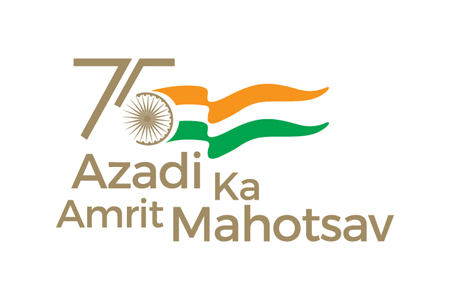- Approved by AICTE & Affiliated to the University of Mumbai | Accredited With B++ Grade by NAAC | Choice Code : 311310210
Bringing organisational values to life

Article published in Financial Express dated 06/11/2017, Pg. No. 7
Organizational culture is a system of shared traditions, shared values, and beliefs which have a strong effect on how people behave in organizations. Dell Computers suddenly struck out of nowhere and outsmarted Compaq and other leaders of the personal computer industry; Nike, which was initially a start-up company with no reputation behind it, raced ahead of Adidas, a longtime solid performer in the sport-shoe market. These companies created magic by redefining value their own values. They built powerful, interconnected business systems that could deliver more value than their competitors. These industry leaders changed the customer’s outlook by delivering value laid products.
So, how customers define value? In the past, customers judged the value of a product or service on the basis of some combination of quality and price. Today’s customers, by contrast, have an extended notion of value that includes the company’s culture in delivering convenience of purchase, after-sale service and dependability. Customer values are met by organizational values which are lasting beliefs that have a strong influence on the people in the organization. It dictates how the organization appears in public eyes.
Edgar Henry Schein (born March 5, 1928), a former Professor at the MIT Sloan School of Management is known for his work in the field of organizational development; specially in areas such as career counseling, talent management, group dynamics and cultural developments. His model of organizational culture originated in the 1980s, identifies three distinct levels in organization. They are artifacts, espoused values and assumptions.
Artifacts include any tangible, evident or verbally identifiable elements in an organization. These include the architecture, beautification of workplace, architectural design, layout, fitting and maintenance, built-in space for movement (space, sound, and acoustics), functionality, attractive visuals, elegance, furniture etc. Artifacts include dress codes. Elegant dress codes speak a lot about workplace culture. They differ as per the nature of the workplace. Wearing I-Card and clean dress, well-groomed employees convey lot about organizational culture.
The employees are organization’s first brand ambassadors. Law firms are different from IT firms, hospitals are different from hospitality, manufacturing is different from retail and back office work is different from client-facing work. Formal dressing, communication, manners, etiquettes, all exemplifies organizational artifacts. Artifacts are the visible elements in a culture and they make the first impression on outsiders. Lazy, shabbily dressed, sloppy employees mar the image of the organization. When we bump into gossiping, self-engrossed employees, we lose interest in transacting with the organization. Don’t we?
Espoused values are the organization’s stated values and rules of behavior. It is how the members represent the organization both in terms of their behavior and performance. Their interpersonal behaviors and their behaviors with outsiders speak volumes. Espoused values are expressed in mission, vision, philosophies and values of the organization. The mission, vision, goals, values are also called strategic intent. These need to be displayed nicely in framed posters in strategic locations in organizations. The mission and vision serve as a guide for all of business processes and decision-making. All stakeholders which include shareholders, employees, suppliers, bankers, and customers associate with firm’s values. The mission and vision project what the organizations hopes to become.

The third level is Assumptions. These are deeply rooted, taken-for-granted behaviors that constitute the deep essence of the work culture. These reflect in actions of the employees and management. A good fit happens when organization hires employee who values the same things as the organization does; a good fit makes the individual and organization both happy. Employee behaviors can make or break an organization. Being honest to work, being a well-wisher of the organization, putting in the extra mile matters a lot. At times, when employees get involved in scams and deceitful acts, or when female employees complain about sexual harassment from bosses, it portrays poor culture. The organizations follow a lot of silent practices, which are not discussed; actions speak louder than words.
Aligning all three layers is critical job because inside an organization, many groups exist – each with a different subculture. Many hurdles such as bureaucracy, personality conflicts among top managers, lack of transparency result into lack of alignment between the three layers. Strategic intents work fabulously when employees and management accept them totally. Organizations need to imbibe its culture internally first, so that it reflects well externally. For example, if an organization gives importance to educational qualifications of employees, the values should be explained in detail to the members as they pass through the organization’s education system.
Highly successful organizations do not simply proclaim set of values; rather they are immersed in their managers as well as their employee’s ideology to an obsessive degree. The adherence of organizational values is the core of discipline. When organization put values in front and in centre, they automatically guide all aspects of business. Building a workforce that lives and works by the company moral code starts with hiring process based upon values.
Good organizations promote organizational values by rewarding behaviors that demonstrate them. Not only does this make the individual feel good, it also pushes the rest of the employees to follow suit. Creating and breathing life into the organizational values and culture starts at the top with leaders who should, and must show an undying commitment to the values and culture and cultivate it in all processes of the business. There is an old maxim: employees do not turn to decoratively framed strategic intent in corridors or on the company website, they simply look at each other!
Dr. Vidya Hattangadi

